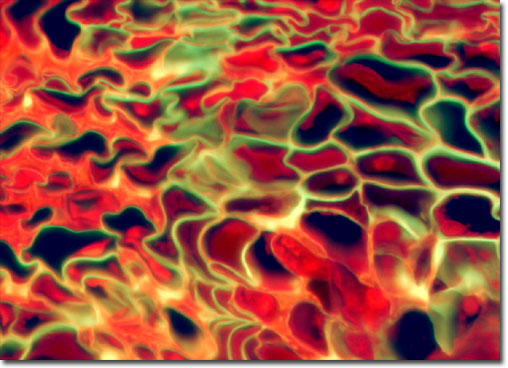Fluorescence Digital Image Gallery
Elderberry (Sambucus canadensis)
|
A number of varieties of the American elderberry (Sambucus canadensis), which grows up to eight feet tall, have been cultivated for home or commercial use. The berries of the plant arrive after the clusters of white flowers and feature an array of colors including red, blue, black and yellow. The unopened flower buds can be pickled and used as a substitute for capers. Traditionally, the berries were used as a source of various violet dyes. Black dye was also made from the bark and green dye from the leaves. Additionally, all parts of the plant were, throughout various times and cultures, believed to have healing properties. Bark and root extracts were used as laxatives, leaf extracts were used as ointments for bruises, and flower water was used in eye and skin lotions. In modern medicine, the flowers are used to reduce fevers and used as a diuretic and expectorant. Back to the first image of elderberry tissue. |
© 1995-2025 by Michael W. Davidson and The Florida State University. All Rights Reserved. No images, graphics, software, scripts, or applets may be reproduced or used in any manner without permission from the copyright holders. Use of this website means you agree to all of the Legal Terms and Conditions set forth by the owners.
This website is maintained by our
|
